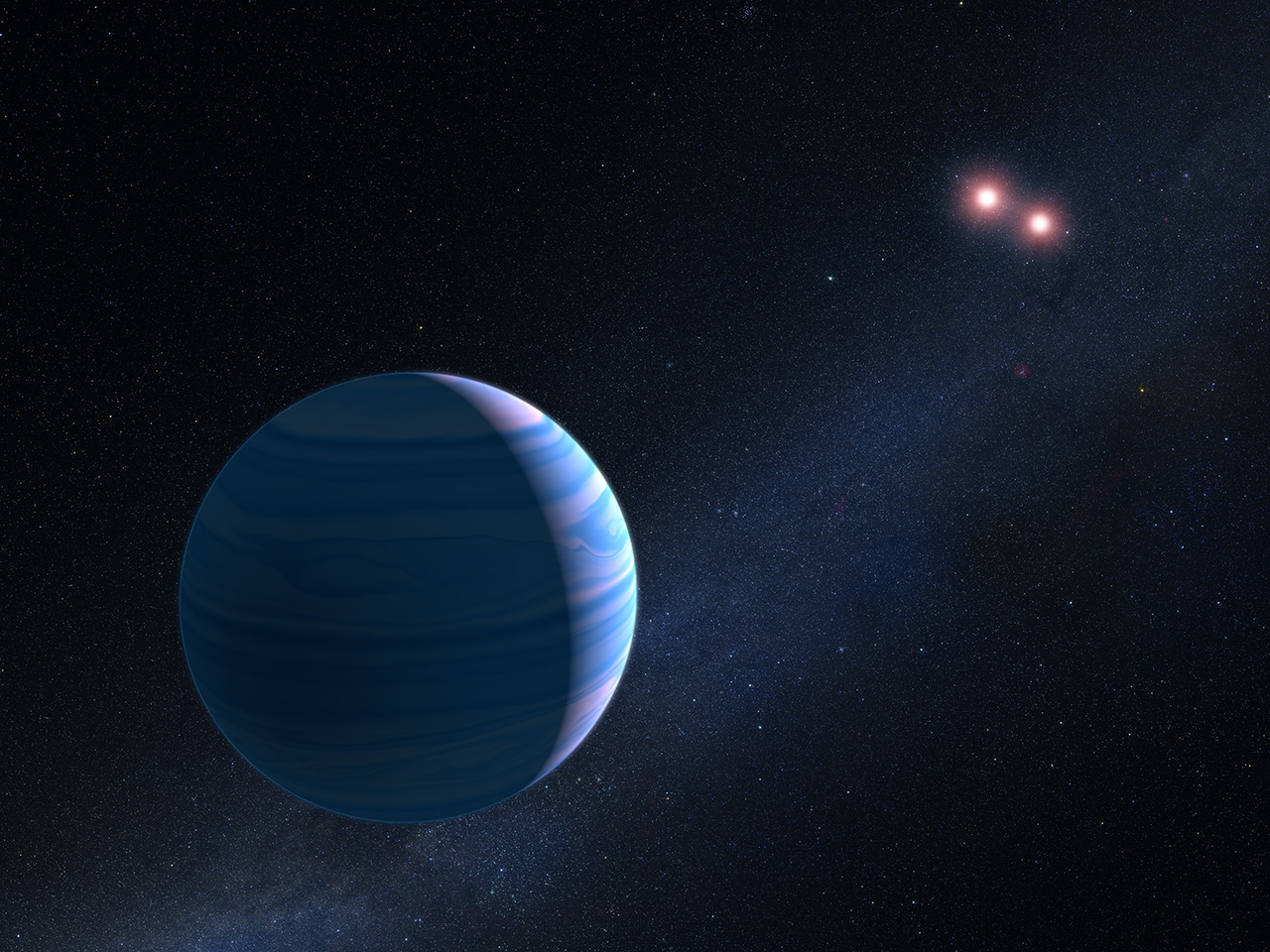Alien Planet Has 2 Suns Instead of 1, Hubble Telescope Reveals

Imagine looking up and seeing more than one sun in the sky. Astronomers have done just that, announcing today (Sept. 22) that they have spotted a planet orbiting two stars instead of one, as previously thought, using the Hubble Space Telescope.
Several planets that revolve around two, three or more stars are known to exist. But this is the first time astronomers have confirmed such a discovery of a so-called "circumbinary planet" by observing a natural phenomenon called gravitational microlensing, or the bending of light caused by strong gravity around objects in space. You can see how researchers found the planet in this video.
In binary-star systems, the two stars orbit a common center of mass. When one star passes in front of the other from our perspective on Earth, gravity from the closer star bends and magnifies the light coming from the star in the background. Astronomers can study this distorted light to find clues about the star in the foreground and any potential planets orbiting the star system.
The exoplanet in this study, named OGLE-2007-BLG-349, is located 8,000 light-years from Earth toward the center of the Milky Way. It was first spotted in 2007 by ground-based observations from telescopes around the world. At first, astronomers identified the system as a planet orbiting one star. Their data suggested that there was a third object, too, but the researchers weren't able to identify it at the time.
"The ground-based observations suggested two possible scenarios for the three-body system: a Saturn-mass planet orbiting a close binary star pair or a Saturn-mass and an Earth-mass planet orbiting a single star," David Bennett of NASA's Goddard Space Flight Center in Greenbelt, Maryland, and the paper's first author, said in a statement.
To get a better view, the team decided to use the Hubble Space Telescope, because space telescopes take better photos of deep space than land-based telescopes. Hubble's high-resolution images revealed that the system has the brightness expected of two closely orbiting red dwarf stars.
A two-planet, single-star model is not possible in this scenario, "because a two-planet model with a main sequence host would appear to be too bright to match the [Hubble Space Telescope] data, while a two-planet system orbiting a white dwarf would be too faint," the study's authors wrote in The Astronomical Journal.
Get the Space.com Newsletter
Breaking space news, the latest updates on rocket launches, skywatching events and more!
"So, the model with two stars and one planet is the only one consistent with the Hubble data," Bennett said in the same statement. With Hubble now shown to be useful for identifying circumbinary exoplanets, the space telescope could become an important resource in the search for exoplanets.
Email Hanneke Weitering at hweitering@space.com or follow her @hannekescience. Follow us @Spacedotcom, Facebook and Google+. Original article on Space.com.
Join our Space Forums to keep talking space on the latest missions, night sky and more! And if you have a news tip, correction or comment, let us know at: community@space.com.

Hanneke Weitering is a multimedia journalist in the Pacific Northwest reporting on the future of aviation at FutureFlight.aero and Aviation International News and was previously the Editor for Spaceflight and Astronomy news here at Space.com. As an editor with over 10 years of experience in science journalism she has previously written for Scholastic Classroom Magazines, MedPage Today and The Joint Institute for Computational Sciences at Oak Ridge National Laboratory. After studying physics at the University of Tennessee in her hometown of Knoxville, she earned her graduate degree in Science, Health and Environmental Reporting (SHERP) from New York University. Hanneke joined the Space.com team in 2016 as a staff writer and producer, covering topics including spaceflight and astronomy. She currently lives in Seattle, home of the Space Needle, with her cat and two snakes. In her spare time, Hanneke enjoys exploring the Rocky Mountains, basking in nature and looking for dark skies to gaze at the cosmos.
